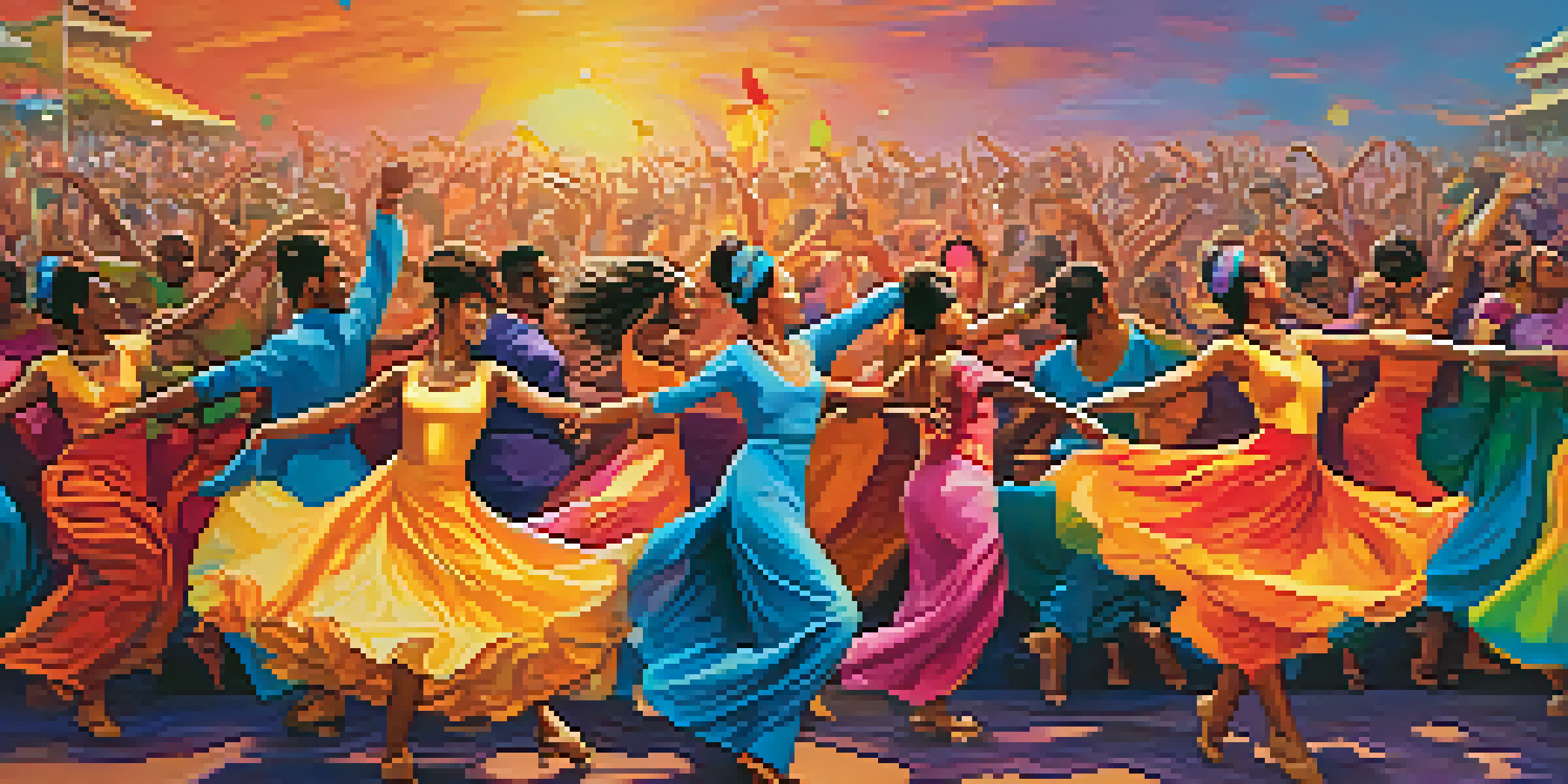How Dance Influences Fashion Trends in Visual Arts

The Interplay of Dance and Fashion: A Brief Overview
Dance and fashion have been intertwined throughout history, each influencing the other in remarkable ways. From the flowing skirts of ballet dancers to the streetwear styles of hip-hop performers, movement informs design choices in clothing. This relationship is not just limited to performance attire; it spills over into everyday fashion, creating trends that resonate with the public. Understanding this connection helps us appreciate how visual arts reflect cultural movements and societal changes.
Historical Influences: How Dance Shaped Fashion Trends
Historically, dance has played a pivotal role in shaping fashion trends. For instance, during the Renaissance, court dances inspired luxurious garments that emphasized elegance and poise. Fast forward to the 20th century, where jazz and swing dance popularized more relaxed and playful styles, allowing for greater freedom of movement. These shifts illustrate how dance not only reflects societal norms but also helps redefine them through fashion.
Dance Influences Fashion Trends
Throughout history, dance has shaped fashion trends, with movements reflecting and redefining societal norms.
Cultural Expressions: Dance as a Fashion Catalyst
Different cultures express their identities through dance, which in turn influences the fashion of those communities. Take, for example, traditional African dance; its vibrant costumes often inspire contemporary fashion designers to incorporate bold colors and patterns. Similarly, flamenco dancing has led to the resurgence of ruffled skirts and vibrant shawls in modern wardrobes. These cultural expressions showcase how dance serves as a catalyst for fashion innovation and creativity.
The Role of Contemporary Dance in Modern Fashion
Contemporary dance has ushered in a new era of fashion, where movement is a key design principle. Designers often collaborate with choreographers to create collections that embody the fluidity and emotion of dance. This fusion results in garments that not only look stunning on the runway but also enhance the dancer's performance. By merging contemporary dance with fashion, artists create a dynamic dialogue that captivates audiences and challenges traditional boundaries.
Cultural Dance Inspires Fashion
Different cultures express their identities through dance, leading to innovative fashion designs inspired by traditional costumes.
Fashion Icons: Dancers Who Changed Style Trends
Many dancers have become fashion icons, influencing trends far beyond the dance floor. Think of artists like Martha Graham, whose innovative costumes changed the perception of dance attire. More recently, figures like Misty Copeland have used their platforms to advocate for diversity in fashion, demonstrating how dancers can impact the broader fashion landscape. Their influence highlights the power of dance as a form of self-expression that transcends movement.
Dance Festivals: Launchpads for Fashion Trends
Dance festivals serve as vibrant environments where fashion trends are born and showcased. Events like the Edinburgh Festival Fringe or the Jacob's Pillow Dance Festival draw diverse audiences, creating a melting pot of styles and ideas. Designers often attend these festivals to gain inspiration from the performers' costumes and the spirit of the event. This symbiotic relationship allows fashion to evolve continuously, reflecting the energy of the dance community.
Social Media Transforms Fashion
In the digital age, platforms like Instagram and TikTok allow dancers to influence fashion trends instantly, merging performance and everyday style.
The Impact of Social Media on Dance and Fashion Trends
In the digital age, social media has dramatically changed how dance influences fashion trends. Platforms like Instagram and TikTok enable dancers to showcase their styles and movements to a global audience. This visibility has led to the rapid spread of fashion trends inspired by dance, as creators experiment with looks that resonate with their followers. Consequently, the dance community can shape fashion trends in real-time, blurring the lines between performance and everyday style.
The Future of Dance and Fashion in Visual Arts
Looking ahead, the relationship between dance and fashion in visual arts is poised for exciting developments. As technology advances, we may see more interactive fashion that responds to movement, further enhancing the connection between the two art forms. Additionally, a growing focus on sustainability in both dance and fashion could lead to innovative materials and practices that reflect the values of modern society. The future promises a rich tapestry of creativity where dance continues to inspire and transform fashion trends.